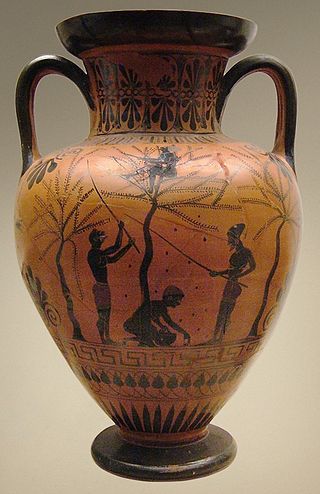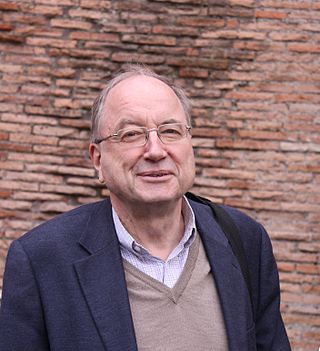
Troy or Ilion was an ancient city located in present-day Hisarlık, Turkey. The place was first settled around 3600 BC and grew into a small fortified city around 3000 BC. During its four thousand years of existence, Troy was repeatedly destroyed and rebuilt. As a result, the archeological site that has been left is divided into nine layers, each corresponding to a city built on the ruins of the previous. Archaeologists refer to these layers using Roman numerals. Among the early layers, Troy II is notable for its wealth and imposing architecture. During the Late Bronze Age, Troy was called Wilusa and was a vassal of the Hittite Empire. The final layers were Greek and Roman cities which in their days served as tourist attractions and religious centers because of their link to mythic tradition.
Manfred Osman Korfmann was a German archeologist. He excavated Hisarlik, the present site of Troy situated in modern-day Turkey.

The ancient Nubian princess Amenirdis II, daughter of the Kushite pharaoh Taharqa of the 25th Dynasty, was adopted by Shepenupet II, daughter of Piye, to become Divine Adoratrice of Amun from around 650 BC to 640 BC during the 26th Dynasty. Amenirdis adopted Nitocris, daughter of Psamtik I, to become her successor. She may have been married to one of Taharqa's sons, king Atlanersa.

The Antimenes Painter was an Attic vase painter of the black-figure style, active between circa 530 and 510 BC.

Joachim Latacz is a German classical philologist.
The Tomb of Aline is an ancient Egyptian grave from the time of Tiberius or Hadrian, excavated at Hawara in 1892.

Marcus Junkelmann is a German historian and experimental archeologist.

The Piraeus Painter was one of the first Attic black-figure vase painters. He was active between 630 and 600 BC.
The Bellerophon Painter was one of the first Attic black-figure vase painters. His period of activity is dated between 630 and 600 BC.
Wolfram Hoepfner is a German classicist, archaeologist, architectural historian, and Professor of Ancient Architectural History, at the Free University of Berlin.
Hans Rupprecht Goette is a German classical archaeologist.

The statue of Pericles with the Corinthian Helmet is a lost, life-sized statue of the Athenian statesman and general Pericles. Today, only some of the base survives. Four Roman Imperial-era marble busts modelled after the head of the statue are known.
Matthias Steinhart is a German Classical archaeologist.

The Green Caesar is a portrait of Gaius Julius Caesar made of green slate kept in the Antikensammlung Berlin, which was probably made in the first century AD.

Heidemarie Koch was a German Iranologist.
Bernhard Schweitzer was a German classical archeologist.

Henner von Hesberg is a German classical archaeologist.

Hermann Parzinger is a German historian who is a specialist in the culture of the Scythians. He has been president of the Prussian Cultural Heritage Foundation since 1 March 2008 and the Executive President of Europa Nostra since 2018.

Katja Lembke is a German classical archaeologist and Egyptologist and director of the Lower Saxony State Museum in Hanover.











